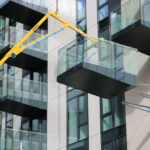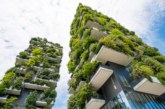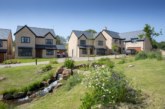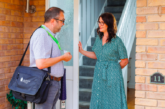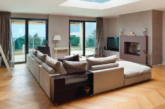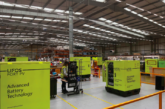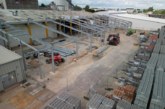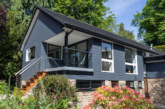With sustainability of growing significance within the sector, PHPD speaks to Nick Haughton, Head of Marketing UK & Global at Sapphire Balconies, to find out what the company is doing to reduce carbon and discover how it latest balcony solutions can help developers.
Q Sustainability is a topic of growing importance within the construction sector. What steps has Sapphire taken to rise to this challenge?
Our commitment to sustainability is nothing new, we’ve been working to make our Glide-On balconies more environmentally efficient for years. This is underpinned by our ISO14001 accreditation which we’ve held for 12 years, since 2009.
The way we strive to continue to improve the sustainability of our balconies is rooted in our commitment to R&D and innovation. From embracing technology like COACH to streamline design and cut down material waste, to designing carbon out of our balconies to investing in a greener future through carbon offsetting.
One way we’ve designed carbon out of our balconies is through the continued development of new innovations. For example, a hallmark of our balconies is their exceptional anchor performance thanks to robust engineering and our lightweight balconies. Fewer anchors mean fewer penetrations of the façade, which in turn reduces carbon emissions and cost. Not only do our anchors help cut carbon through improved thermal performance but also through reducing the amount of material used per balcony which cuts carbon in manufacturing.
Thermal performance is integral to creating greener buildings. This is because heat is lost through penetrations in the façade, leading to greater energy use to keep homes warm and therefore greater carbon emissions. It is estimated that 25% of carbon emissions come from homes and with the Government’s target to reduce greenhouse emissions by 80% by 2050, it is essential to cut carbon wherever possible.
In addition, we’re working with sustainability experts to better understand what we and the industry can do to improve. We’ve set rigorous targets to tackle our embodied and operational carbon and in the meantime, we’re offsetting our carbon emissions through credits with carefully selected conservation efforts.
Q When taking a sustainable construction approach, what are the key considerations in balcony design which affect this?
During construction, the main source of carbon is the embodied carbon which includes the materials used as well as shipping and hidden the carbon emissions in things like staff travel to site.
Designing out weight with aluminium balconies reduces the number of penetrations in the façade affecting both embodied and occupational carbon. Opting for offsite manufactured balconies brings the benefits of improved efficiencies in production cutting emissions and waste. This also minimises the number of staff travelling to site creating emissions from vehicles and facilities.
The industry should also make use of the digital tools available to predict the environmental impact of a building at the design stage. For example, at Sapphire we have software that enables us to predict the heat loss per year of a balcony design, allowing clients to adjust designs as needed with this insight.
Q What help is available to housebuilders in understanding the sustainability impacts of balconies?
Sustainability is a complex topic made all the more overwhelming when considering the scope of a residential project. We’ve spoken with a myriad of experts each passionate about improving the sustainability of construction to create a range of resources.
Our suite of digital tools includes COACH, our balcony configurator, and our thermal calculator which allows designers to see the performance of their balcony in real-time as they design it. We also offer a carbon CPD which delivers all our research findings and allows construction professionals to ask their questions directly as well as a carbon Whitepaper with in-depth data and guidance.
It can be challenging to cut through the theory and find firm solutions cost-effectively, we hope our support can provide the industry with the guidance they need.
Q Do the material choices I make when designing a balcony make a difference regarding sustainability?
In short, yes. The embodied carbon in construction materials varies widely and can be an unseen source of emissions. Concrete, for example, entails significantly more embodied carbon than other materials and requires linear thermal breaks along the full connection to the building to reduce heat loss. This not only drives up costs but also adds substantially to the footprint of the project.
Steel bolt-on balconies are substantially heavier than aluminium creating more emissions during transport as well as requiring significantly more anchors and therefore façade penetrations.
Aluminium on the other hand may not appear the best option when comparing per tonne with steel, but this is an inaccurate comparison. A tonne of aluminium goes much further and produces more balconies than a tonne of steel making it much more carbon efficient. Aluminium is also very easily recycled and our Glide-On balconies are almost entirely recyclable. At the end of their lifespan, our balconies can be removed as easily as they were installed and sent for recycling to continue in the circular economy.

